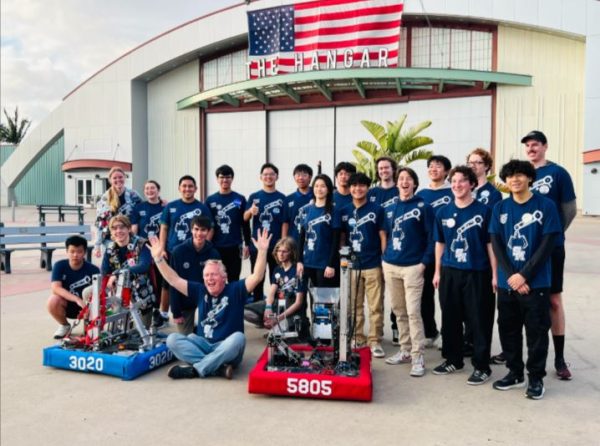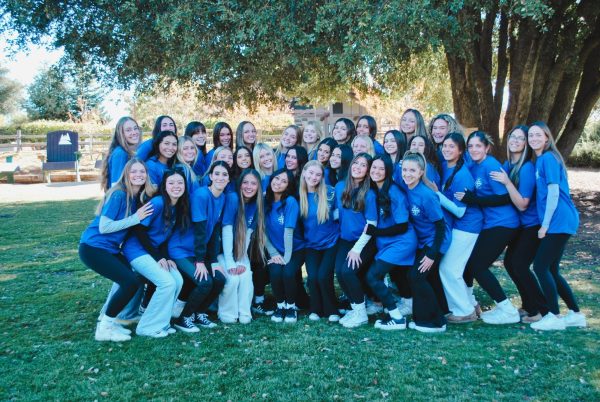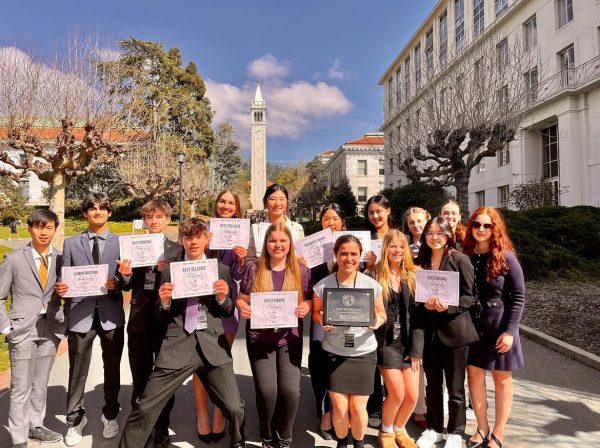Gearing up for FRC
SMCHS’ robotics elective students and club teammates have achieved great success and are striving for more.
Buttons are pushed with great speed. Gears click into place and whir frantically. The microcontroller brain boots up. The robot is ready for action.
During the 2014-2015 school year, SMCHS started its very first robotics elective class, but the bots didn’t stop here. This school year holds another reward for SMCHS robotics: the Robotics Team, an extracurricular club that meets after school. Recently dubbed, “SMbly Required” by Tom Gerlach, Latin teacher, these electronic eagles have soared to new heights.
“The club is a totally different type of robotics than the class,” said Jason Lawrence, robotics teacher and coach. “The after school competition team can exist without the class because the two are completely separate, but there are a decent amount of students in both.”
SMbly Required attended three Vex competitions, winning the Judge’s Award in October, the Design Award in November, and the Judges’ Award and Create Award in December. Vex competitions consist of check- in and robot approval, qualifier rounds, elimination rounds and the finals. The robot dimensions are smaller: 18 by 18 inches.
“We went to Vex with a structured team of different units of people who work on specific aspects such as the assembly division, the programming division, the design division and the outreach division,” said senior Mac Dalphy.
For Vex, the Robotics Club splits into two teams. The more advanced team, Team E, attended all three Vex competitions. The rookie team, Team A only attended the December Vex competition.
“Each team has a team leader, master designer, master builder and master programmer,” said sophomore Pelin Ensari.
With Vex serving as preseason, the next big competition for these talented techies is First Robotics Competition (FRC) for which the objective involves shooting boulders into small holes in models of castles. After dissecting the game and deciding how to play, the robotics team creates their competitor through a lengthy process.
“We have six weeks to come up with a concept for our robot followed by prototyping, designing, and building the functioning robot,” Dalphy said. “At the end (Feb. 20) we have to put the robot in a bag with a zip tie on it and leave it until competition day.”
Rules and regulations for FRC can be found in the 111-page game manual which became available on Jan. 9.
“Part of the detailed design process involves a computer-aided design program (CAD) to create a 3D model of the robot before we ever build it,” Lawrence said.
The CAD program used by SMbly Required is called SolidWorks, and would cost around $4000 to purchase. It is also in use at Applied Medical, which offers summer internships to those who pass a certification test that determines their ability to use SolidWorks.
“Because FRC has such a big learning curve with teams out there who have been doing this for more than 15 years, they have a huge advantage over us of knowing how to build parts, how to manufacture good strategies and stuff like that,” Dalphy said. “If we can help teams in areas where they struggle or in approaching the competition with an original perspective and make ourselves desirable in that focus, we can win Rookie of the Year.”
Several companies such as Entech and Toshiba have contributed grants to the budget for the many FRC expenses.
Best of luck to these bot-building brainiacs as they enter FRC at the end of March with talons outstretched for the Rookie of the Year Award! From there they will flock to St. Louis for World Championships!











